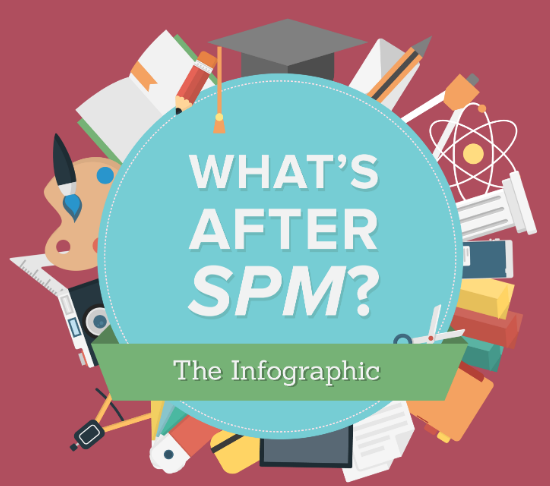The best course after SPM depends on your career goals; consider A-Levels for broad study or vocational training for specific skills.
Table of Contents
Pre-University Programs
Having finished the SPM, most students in Malaysia look for pre-university programs. Such programs serve as a connection between secondary and higher education and constitute the essential base for specializing in a particular academic field. The most well-known choices include A-Levels, STPM, and foundation programs, which allow for incorporating individual learning styles and academic goals.
First of all, A-Levels are universally recognized and are supposed to last for 18 months. A student who aspires to specialize in, say, engineering, will be able to choose three to four subjects, such as mathematics, physics, and chemistry. This flexibility of subject choice allows for developing a powerful application letter and portfolio that may be competitive at different universities. STPM is, by all means, the hardest pre-university qualification. Conducted by the Malaysian Examination Council, this program incorporates a considerable variety of subjects and is welcomed by both Malaysian and foreign universities . Regarding the abovementioned short-term financial possibilities, STPM is undoubtedly much cheaper than A-Levels or the first-year salaried foundation programs. For instance, the total expenditure on STPM may be less than RM1,500, while the rates at private institutions will range from RM25,000 to RM50,000. The last option includes the one-year tailored foundation programs run by various higher education institutions . During such programs, students are educated so that to match a relevant degree course offered by the same university. In other words, the programs provide the necessary educational foundations and ensure a place at a particular course, provided that a student attains the required grades. This is a pretty good choice for students who have already decided on the course that they wish to take at a certain university.
In conclusion, each of the alternatives has distinct advantages in terms of cost, duration, and extent of preparation for higher education. Their choice can be determined by the ambition, particulars of the required university, and economic opportunities of the student. For instance, the A-Levels option is favored by students who can afford expensive higher education at top-tier universities abroad.

Diploma Programs
Diploma programs are an efficient way for SPM Grade 11 graduates to get into highly specialized areas and usually last from 2 to 3 years. This type of education provides both practical skills and knowledge of narrow technical disciplines. For those preparing for quick entry into the labor market, especially for students who are not ready to invest in a degree, diploma courses are an excellent option.
Among the available programs are diplomas in Engineering, Informational Technology, Pulic Relations, Business Management, Hospitality, Health Sciences, etc. For instance, the subjects in the program for a Diploma in Information and Technologies are programming in the software environment, analysis of information systems, and security in computer networks. All the courses provide practical skills – the most important component of education. It is crucial because it raises the level of employment for students, allowing them to acquire the knowledge that is required of them by future employees right away.
As elsewhere in the world, the cost of acquiring a diploma depends greatly on the university and the particular course. To outline the average, let us take the example of a business course. Overall, the completion of a diploma in Malaysia costs from RM15,000 to RM50,000. The difference from the cost of obtaining a bachelor’s degree is palpable; for instance, in the case of Britain, it ranges from RM40,000 to over RM100,000 per year . Therefore, no wonder that many students opt for the first, taking into account their budget. Moreover, diplomas provide a great way to start working quickly, as they usually have apprenticeships or placement terms. For example, the Diploma in Culinary Arts has factory industry and kitchen industrial training that lasts up to six months . After the completion, the student received real-world experience, obtaining new connections; namely, in the MGri group apart from training they could work with italian pizza and pasta of the hotel’s products.
Last but not least, diplomas provide good study options in the future. Graduates who want to continue their education and choose to stay can freely study for the second or last three years of the relevant degree program. This process is referred to as ‘degree progression’ or ‘advanced standing.’

Vocational Training
Vocational training is an attractive option for students who have just finished SPM and are interested in working in practical and technical fields. Unlike pre-university courses, vocational training involves education that focuses on specific trades and professions, such as automotive technology, culinary arts, electrical technology, and healthcare. One of the biggest benefits of this type of education is its direct connection with job markets. Vocational training programs are usually developed with the engagement of industry professionals so that the curriculum can remain relevant to what the workplaces need. For example, if a student applies to study automotive technology with a vocational training provider, they will not only learn how to physically fix cars and vehicles but also get to understand how the latest diagnostic systems work and have hands-on experience working with the most modern of them. This way, the student gains an opportunity to become a direct worker and keep vehicles in shape. The length of the training programs can vary but usually ranges from one to three years . In addition, the cost is significantly lower as well. For example, a full program of vocational training in Malaysia may cost the student between RM5,000 and RM20,000, which is significantly less than the over RM100,000 needed to get a full university degree .
Vocational training programs also offer the students internships and apprenticeships, which play a crucial role in developing real-world skills and enhancing employability. For example, culinary students have to spend professional placements in real restaurants, which offer them the experience of working in the kitchen, understand how it is managed, and learn further from professional chefs. Graduate students can find work immediately upon the completion of their course of study, start their businesses, or continue their education and gain certificates and other qualifications that would help them to advance in their field. For instance, after a few more years of practical work and passing relevant exams, a vocational school graduate with the diploma of an electrical technician can become a certified Master Electrician and look for higher-paid employment opportunities or establish their own business procedures.
Foundation Courses
Foundation courses provide a great pathway for SPM graduates wanting to make a smooth transition into tertiary education. Usually lasting for around one year, these programs prepare students for a range of undergraduate degrees by focusing on academic skills development and in-depth subject knowledge. Most beneficial for those students who are sure of their future university major but lack the preparedness for further undergraduate study. For instance, a foundation in science program might offer subjects including biology, chemistry, physics, and mathematics, which should be taken for university degrees in medicine, engineering, or computer science.
The cost of foundation programs can vary but is generally lower than that for international pre-university qualifications such as A-Levels or International Baccalaureate. On average, foundation courses in Malaysia cost between RM15,000 and RM30,000, which is still cheaper in comparison to RM25,000 to RM50,000 for A-Levels in private colleges.
One of the main advantages of foundation courses is their seamless transition into undergraduate programs, especially at the same institution the course was taken at. Many universities in Malaysia offer a direct pathway from foundation courses to their degrees, often with a conditional acceptance based on achieving a certain academic standard during the foundation year. This means that students often do not need to reapply to the university and are already familiar with the institution at the point of continuing their undergraduate program. Moreover, foundation courses often come with added flexibility, so students can change their major if they have discovered a new interest or their career goals have changed during the course. Such flexibility is often necessary given that many of the students are still young and actively considering their future career.

